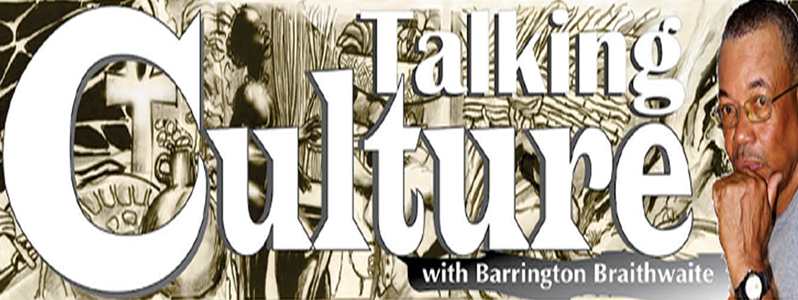One of the first myths to be dispelled with, would be, to define who were the Africans that were condemned to the ‘Middle Passage’, to understand that they were not slaves in Africa, but were more so tribe people opposing the African tribal Kingdoms involved in the slave trade, whose reaches imposed its ambitions on their territory. They were traded for European weapons, iron bars, etc. To assist in the expansion of Kingdoms, it is also possible that tribe’s folk within these very kingdoms were also committed to slavery, for various reasons justified by the power elite.
Still, the important ingredient is that these were people that belonged or were exposed to or may have evolved from the guilds that composed these tribal Kingdoms. From the very beginnings of the interactions in the new world, records testify that our enslaved ancestors eventually allowed some indulgence of private farming space and know-how in various areas in the long day of a slave’s harsh existence. In the three colonies that now comprise our Guyana there were laws to such trade. “In 1772 the Dutch government concerned with growing slave unrest, established rules governing relations between masters and slaves. It prohibited slaves from selling -and colonists and seamen from buying from slaves any staple such as sugar, coffee, cacao, rum, indigo.
But it authorized the purchase of cattle, greens, and vegetables out of their “fields.” Slaves were to be paid in money, clothing, or Knick-knacks, but by no means in Guns or any other kind of fire arms nor in Gun powder or lead. Slaves complemented their diet with the products of their own gardens. Every traveller who visited Demerara in the early period marvelled at the slave gardens, where they grew yams, corn, a variety of squashes, they also raised chickens, ducks, goats, turkeys and rarely pigs, apart from the small gardens near their houses they had access to provision grounds. Their farming skills supplemented the colony in times of European wars when ships were less frequent” see-“Crowns of Glory, Tears of Blood” by Emilia Viotti da Costa.
 The enslaved were allotted by law one acre to every five slaves for cultivation. This was the foundation that provided the savings possibly concealed in earthen goblets that empowered the possibility to purchase the first villages, (their act of self-reliance would not be ignored because one of the standard decrees of colonization is to ensure the mental dependence of the colonial on the perceived superior craft of the colonizer) and this act did empower the manumitted subjects of the colony to lay the template for Guyana’s post Emancipation cash crop farmers from the early 19th century to this day. It must be understood that the foodstuff that became the staple of the Creolised colony was ‘tropical’ and not temperate up to the early 20th century. Two prominent markets had envelope the coastal enslaved population of Demerary-a at that time, the Mahaica market, Mahaica during the visit of Henry Bolinbroke 1799-1806 apart from its enslaved populations and vibrant planter population, Mahaica also had Military posts established there in the vicinity where the asylum was, this area was described as having a peculiar healing power. Thus, sick soldiers were taken there to recover, therefore the need for fresh items from plantation slave farms. The other was and the market at Stabroek, which only existed on Sundays but had the hungry ‘Tall Sail Ships’ eager for their produce, especially the citrus fruit, to suffice the absence of vitamin C after deprived months at sea. The agricultural movement did not fade away after Emancipation, because a battle ensured for village control through its village councils against central government. In 1898 at the opening of the Victoria-Belfield Horticultural and Industrial show, the Chairman had to point out, emphasizing that the support for the show did not come from the planters, but by men more or less connected to the peasant [roots] class. The villages were in a conflict to highlight their products in exhibitions in the colony or abroad that they knew were pushed aside or completely neglected. See-“Walter Rodney-History of the Guyanese Working People,1881-1905.
The enslaved were allotted by law one acre to every five slaves for cultivation. This was the foundation that provided the savings possibly concealed in earthen goblets that empowered the possibility to purchase the first villages, (their act of self-reliance would not be ignored because one of the standard decrees of colonization is to ensure the mental dependence of the colonial on the perceived superior craft of the colonizer) and this act did empower the manumitted subjects of the colony to lay the template for Guyana’s post Emancipation cash crop farmers from the early 19th century to this day. It must be understood that the foodstuff that became the staple of the Creolised colony was ‘tropical’ and not temperate up to the early 20th century. Two prominent markets had envelope the coastal enslaved population of Demerary-a at that time, the Mahaica market, Mahaica during the visit of Henry Bolinbroke 1799-1806 apart from its enslaved populations and vibrant planter population, Mahaica also had Military posts established there in the vicinity where the asylum was, this area was described as having a peculiar healing power. Thus, sick soldiers were taken there to recover, therefore the need for fresh items from plantation slave farms. The other was and the market at Stabroek, which only existed on Sundays but had the hungry ‘Tall Sail Ships’ eager for their produce, especially the citrus fruit, to suffice the absence of vitamin C after deprived months at sea. The agricultural movement did not fade away after Emancipation, because a battle ensured for village control through its village councils against central government. In 1898 at the opening of the Victoria-Belfield Horticultural and Industrial show, the Chairman had to point out, emphasizing that the support for the show did not come from the planters, but by men more or less connected to the peasant [roots] class. The villages were in a conflict to highlight their products in exhibitions in the colony or abroad that they knew were pushed aside or completely neglected. See-“Walter Rodney-History of the Guyanese Working People,1881-1905.
It must be still in the memory of citizens over 50, that by the 1950s-60s a vibrant campaign was instituted that had successfully appealed to ‘Rich versus Poor’ defining social stratifications in food. Imported apples and grapes, dates, chocolates especially in gift tins, corn beef, marshal sardines, curry mutton, corn and tomato paste, all in tins with beautiful coloured labels, suddenly defined a higher stratum of affordability, the local cuisine we celebrate today came under a fearful attack. Negative lore enveloped around some items sacred to both Africans and the East Indian population in the modern era. The coconut became a symbol of hard times. It shouldn’t rest on the dining table; it was bad luck; this was a staple for villagers and a bush-cook must-have. The avocado pear became mysteriously (the only fruit) source of cholesterol. That era of repressed Emancipation had to wait on Burnham to reassert sanity, lest we forget entirely, the mostly healing, liberating tastes of the ancestral kitchen.




.png)









